

Tao Te Ching
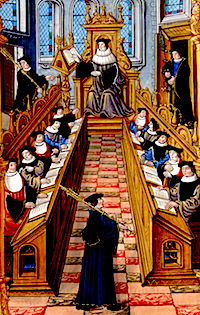
University of Paris from 14th-century manuscript
High Middle Ages (1095 – 1304 CE)
High Middle Ages (1095 to 1304)
During this time, European populations increased rapidly, urbanization took hold, economies quickly grew, and dramatic social and political change took place. Strong monarchies developed, borders shattered by invasions were restored, and new agricultural technology supported the larger populations but clear-cut vast forests. Increased availability of Latin translations and Aristotle revitalized science, launched Scholasticism, and helped restore educational systems. The Catholic Church attained it’s most powerful position in the world and launched crusades and inquisitions. Byzantine art and Gothic cathedrals dominated the visual world. Christian monasticism reached its height and mendicant orders like the Franciscans, Carmelites, Dominicans, and Augustinians were founded. “Heretical” sects like the Waldensians and the Albigensians, and gnostic Catharists proliferated. Inventions from this period include the windmill in 1185, paper in 1270, the spinning wheel, the magnetic compass, eye glasses, and Arabic numerals were introduced into Europe by Fibonacci in 1202. Religious belief dominated most of music and created the Gregorian chant but troubadours also arose singing of courtly love and many other secular themes.
Sages (71)
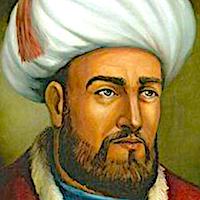
Al-Ghazali أبو حامد محمد بن محمد الطوسي الغزالي (Abu Hamid Al-Ghazali)
1058 – 1111 CE
Philosopher of Sufism
Legal and theological scholar, rationalist, spiritual philosopher, and Sunni mystic; Al-Ghazali became known as a Mujaddid, a once-in-a-century Muslim "renewer of the faith." Believing that the original Islamic teaching quickly became corrupted, he worked to bring the original wisdom back into awareness and—as a side-effect—brought a critique of the Aristotelian approach that facilitated the advancement of European science. He helped integrate Sufism into mainstream Islam and his teaching became a profound influence and foundation for Islamic business ethics and practice.
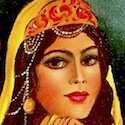
Arwa al-Sulayhi (Al-Malika al-Ḥurra)
1048 – 1138 CE
The stellar example in Muslim history of an independent queen; Arwa ruled Yemen, was the greatest leader during the Sulayhid Dynasty, and was - for the first time in the entire history of Islam - a woman given the title of hujja, the highest status in Islam. Extremely beautiful, intelligent, scholarly, brave, and powerful; she studied science, poetry, history, completed practical and beneficial infrastructure projects, supported agriculture, and built many schools. Her direct lineage continues today in both Yemen and India.
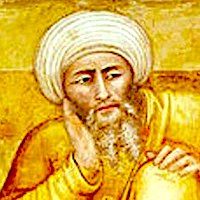
Averroes, Ibn Rushd ابن رشد
1126 – 1198 CE
Polymath, famous Islamic philosopher and scientist, theologian, and physician; Averroes took the position that the Koran and sacred writings were allegories and not to be taken literally. Arguing for an understanding deeper than just the literal meaning of texts, he popularized Aristotle and started a major Jewish and Christian philosophical movement but didn’t become influential in the Muslim world until the 19th century. In fact, during his lifetime, all his books that could be found were burned, he was removed from his positions, and exiled. Dante described him as he "who made the Great Commentary,” Chaucer listed him as a great medical authority, Raphael painted him into a fresco in the Apostolic Palace in the Vatican that depicts major philosophers, Borges featured him in one of his books, and a plant genus, a lunar crater and an asteroid were named after him.

Bhikṣanapa བྷི་ཀྵ་ན་པ། ("Siddha Two-Teeth")
940 CE –
Mahasiddha #61
Bhikshanapa བྷི་ཀྵ་ན་པ། “Siddha Two-Teeth” (10th century CE)
Low caste and very poor, Bhikshanapa unexpectedly inherited some wealth. Like most people today winning a lottery or inheriting unaccustomed riches, he quickly lost it all along with his fair-weather friends. This led to a period of intense self-loathing and depression but also an openness to meeting and hearing a teacher and new way of experiencing the world. Seeing through his consumerism andspiritual materialism, he metaphorically (and possibly physically too), lost all but two of his teeth which became symbols for the balance and harmony of wisdom and skillful means. Resuming his external life style of roaming from village to village, he transformed from a miserable, needy beggar only thinking about himself into a wonderful teacher constantly dedicated to helping others. Mahasiddha #61
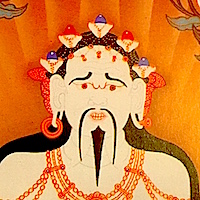
Campaka ཙ་མྤ་ཀ (“The Flower King”)
820 CE –
Mahasiddha #60
Extremely wealthy, powerful, caught up in pleasure, and sitting on a throne made from sweet-smelling flowers; Kampala met a wandering yogi. He tried to impress the sage with the splendors of his kingdom and the beauty of his flowers but the sage told him the truth, that his flowers smelled great but his body not so much, that his realm was wonderful but before long it and he would be gone. Realizing the superficiality and meaninglessness of his life, Kampala began a spiritual path but only shifted his physical materialism into spiritual materialism. Directed to focus his meditation on “the flower of pure reality,” he practiced and finally realized the empty essence of his mind. Mahasiddha #60
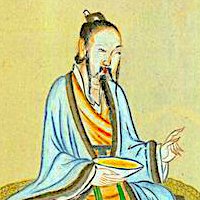
Cheng Zhu 程俱 (Ch‘eng, Chü, Zheng, Ru, Ju Cheng)
1078 – 1144 CE
Neo-Confucian founding uncle
Political critic and scholar-official, Cheng Zhu became a major critic of the political policies of his era and an important influence on the development of neo-Confucianism. A philosophical school named after him became a strong influence advocating morality as the foundation for political leadership.
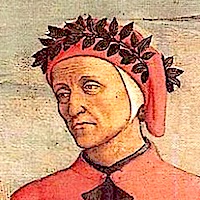
Dante (Durante degli Alighieri)
1265 – 1321 CE
Dante fell madly in love with Beatrice when she was only 8 years old and described his passion as “a God stronger than I who came and ruled me.” This unrequited love lasted through her marriage to another, her death at only 24, and throughout Dante’s life. It inspired his great work, The Divine Comedy now considered the greatest book in the Italian language and most important Middle Ages poem. Dante’s politics led to his exile, loss of citizenship and property, 15 years of poverty-stricken wandering, and a decree for him to be arrested and burned alive. His vivid descriptions of hell were based on personal experience and his writings saved him from the intensity of his suffering as it helped establish modern literature. Florence apologized for his exile 700 years later.
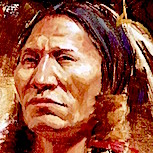
Deganawida (“The Great Peacemaker”)
12th century CE
Founder of the largest and most powerful Native American union, the Iroquois League, "The Great League of Peace" based on sharing and cooperation that established the world’s the oldest participatory democracy and brought a golden age to the native American tribes in the Great Lakes/ New York region for hundreds of years, Deganawida worked all his life bringing this vision to our world. Deeply admired by George Washington and Ben Franklin, this League was a big influence on the original thirteen colonies becoming one republic, on furthering the democratic principles included in the US Constitution, modeling and inspiring the League of Nations and now the United Nations. Identified by many members of the Bahá'í Faith with their founder Bahá'u'lláh, Deganawida continues as a voice of peace and sanity in our modern world.

Dōgen Zenji 道元禅師
1200 – 1253 CE
Illegitimate son of a Japanese noble, Dōgen became a famous poet, writer, philosopher, and founder of the Sōtō school of Zen. Dissatisfied with the spiritual materialism of Buddhist teaching and teachers in Japan, he traveled to China seeking a more authentic Way. After training there for many years he returned, taught a meditation practice called zazen, and wrote the first Japanese monastic code. His deep understanding and powerful use of language helped bring realization to many and continues today.
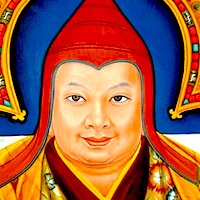
Dölpopa Shérap Gyeltsen དོལ་པོ་པ་ཤེས་རབ་རྒྱལ་མཚན།
1292 – 1361 CE
A teen-aged run-away on-the-road spiritual seeker; Dolpopa became one the most influential Tibetan teachers, one of the most original thinkers in all of Tibetan history, one of the greatest experts on the Shambhala Kalacakra teachings, and a figure so controversial he is still inspiring debate 700 years later. It’s said that when followers of the traditional lineages heard these teachings, they “experienced seizures and scrambled brains.” He described a True Self, a Buddha nature, a "Diamond Self,” an unconditioned, living truth and presence within all of us. He agreed with the traditional teaching that absolute and relative are both empty but taught that they are empty in different ways, the relative empty of self-nature; the absolute empty of other but not empty itself (the Zhentong view). His Jonang tradition was violently suppressed by the Tibetan government during the 17th century, banned by Gelug authorities, and attacked in an attempt to wipe it out by the Fifth Dalai Lama. It survived however as a powerful influence on all of Tibetan Buddhism and crucial to the 19th century Rimé (རིས་མེད) movement.

Francis of Assisi
1181 – 1226 CE
One of the most venerated religious figures in history and considered the patron saint of animals and the natural environment, a pope confirmed Francis as “Patron Saint of Ecology.” He believed nature itself is “the mirror of God” and he’s closely connected to the lineage of Lao Tzu, the early Taoists, Thoreau, Emerson, and Native Americans. He traveled widely, worked hard to end the Crusades, dedicated himself and his followers to poverty and helping the poor, exposed the materialism of the church leaders of his time, and by many accounts successfully changed history.
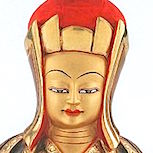
Gampopa སྒམ་པོ་པ། (Sönam Rinchen, Dakpo Rinpoche)
1079 – 1153 CE
Doctor, student of Milereapa, and founder of the Kagyu school of Tibetan Buddhism; Gampopa started as a householder with a family and then became a monk when they died. In a similar way, he changed the yogi/householder style of Marpa and Milarepa into a monastic approach. He integrated Atisha’s Kadam school with the Mahamudra teachings of Milerapa and four of his disciples founded the four main Kagyu schools. Though on the surface, this moved the tradition away from the non-thought, wisdom-beyond-words approach and instead emphasized rules and concepts; stories tell of Taoist teachers and influences on Gampopa, secret practices and teachings he gave in this lineage as well.
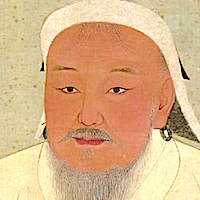
Genghis Khan
1162 – 1227 CE
Genghis Khan (c. 1162 – 1227)
Maligned by history, feared by all, conqueror of more territory, people, and countries than anyone either before or since; Genghis Khan rises high on the scale of best-known historical symbols. Although a continually creative innovator who helped establish the modern world by promoting religious tolerance, international law, and the cross-fertilizing of multi-cultural medicine, science, trade and art; most historians and stories label him as barbarian, bloodthirsty, and cruel. Perhaps it was his extreme openness and tolerance that invited this projection. Coming into Europe and many countries during times of deep corruption, intolerance, and exploitation; his openness and tolerance became the real threat, deeper than his military might. His legacy shows that the real “barbarians” were the culturally chauvinistic, narrow-religion-trapped believers, and tradition-blinded people of his and our own time.

Gesar of Ling གེ་སར་རྒྱལ་པོ།
11th century CE
Generally considered a real person in Tibet and Mongolia, a legend like King Arthur by western scholars, Gesar represents the heroism and wisdom necessary to overcoming the negative impulses in society, culture, and government that oppress people and prevents happiness from flourishing. Called the world's last living epic, the Gesar story includes more than 120 volumes, a million verses, and 2100 hours of oral performance - the largest body of epic literature in history. The Gesar epics derives from Indian Buddhism, native Tibetan Bön, and alchemical Taoism. Like Homer’s Iliad, they include performance, poetry, philosophy, education, politics and religion.
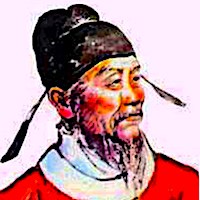
Guo Shoujing 郭守敬 (Ruosi, Kuo Shou-ching)
1231 – 1316 CE
One of the history's most influential scientists
Most highly regarded Chinese engineer, astronomer, mathematician of all time; a child prodigy and Kublai Khan’s chief science advisor, Guo Shoujing developed a calendar used for 363 years, the longest use of one calendar in all of Chinese history and the foundation for the Gregorian calendar that is still the world’s most used calendar. Spreading an approach called "evidential learning,” he became the leading influence on the development of Chinese science. He invented astronomy tools that calculate the accurate length of a year, an astrological compass using the stars instead of magnets, perfected watches and clocks that greatly increased accuracy, and perfected irrigation and reservoir techniques that increased harvests for hundreds of years.
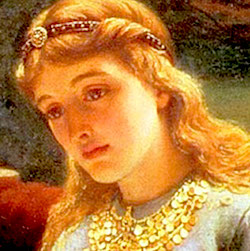
Heloise
1090 – 1164 CE
An orphan raised in a convent, Héloïse became a brilliant scholar, one of the earliest and most radical feminists, a powerful abbess over multiple convents, and half of one of the most famous and talked about relationships of her era. As femme fatale to Peter Abélard when he was on the rise toward becoming a pope, her influence caused him immense humiliation and pain as well as the inspiration for some of the most important books of the time, a regard for the sense over the words, and a declaration of philosophical independence for reason over belief. It’s become a tradition for the hoping-to-find-true love to leave letters at their crypt.
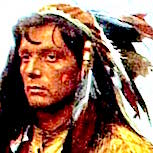
Hiawatha Haiëñ'wa'tha
12th century CE
Shaman, statement, and disciple of Huron prophet and spiritual leader, “The Great Peacemaker” Deganawida; Hiawatha used his charisma and great oratorical skills to spread his teacher’s message of peace and unity bringing together many tribes into the world’s oldest and longest lasting participatory democracy. Deganawida had deep wisdom, vision and spiritual presence but also a severe speech impediment. Like Plato for Socrates, Ashoka for the Buddha, Chuang Tzu for Lao Tzu, Mencius for Confucius, and Paul for Jesus; Hiawatha brought his teacher’s message to the greater world. Gathering the tribal leaders and agreeing on a union, they buried their weapons and on top planted the “Tree of Peace.”

Hildegard of Bingen
1098 – 1179 CE
Circumventing her times’ strong prejudice and bans against women's social, artistic and theological participation, Hildegard became a famous writer, composer, botanist, philosopher, visionary, Christian mystic and the founder of scientific natural history in Germany. The first Westerner credited with describing the healing powers of food and corresponding with the political, religious, and scientific leaders of her day (popes, emperors, saints and scientists), she used her influence to combat corruption, promote spiritual insight, holistic healing, the arts, and women’s role in the world
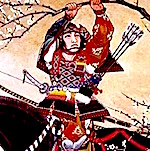
Hojo Tokimune 北条 時宗
1251 – 1284 CE
Hojo Tokimune, Hōjō 北条 時宗 (1251 – 1284)
Mainly responsible for the spread of Zen Buddhism in Japan and ruler during the time Kublai Khan was invading and trying to conquer; Hojo Tokimune as the 8th Shogun and with the help of typhoons repelled two Mongol invasions. (The second included 4,400 ships and over 140,000 troops.) He personally planned and led the defense and in the process established a new warrior class called samurai which became one of the most fierce fighting forces the world has ever known. He brought famous teachers from China, built temples, and funded the transplanting and translation of Chinese Chan Buddhism into Japanese Zen. Although dying when only 33 years old, his influence on Japanese politics and culture ran deep and still continues.

Hóngzhì Zhēngjué 宏智正覺 (Shōgaku)
1091 – 1157 CE
A highly prolific literary giant, Hongzhi taught “silent illumination,” shikan taza (just sitting), a return to our original nature without gaining ideas, letting go of conditioning in completely relaxed awareness, and a return to the world. These teaching became a root influence on the beginnings of the Soto Zen school. He was abbot of the Tiantong Monastery where later Eihei Dogen studied. Dogan brought these teachings to Japan extensively quoting Hongzhi describing him as an “Ancient Buddha.”
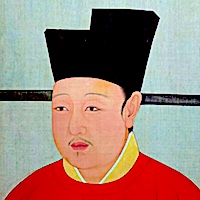
Huizong 徽宗 (Emperor Huizong of Song)
1082 – 1135 CE
Great artist, failed ruler
Polymath, poet, musician, called “one of the greatest Chinese artists of all time,” but an incompetent leader taking disastrous advice to disastrous results; Huizong demonstrated the difficulty of blending art and politics. Collecting over 6000 paintings, he sponsored artists, wrote poems, painted, reformed court music, and wrote dissertations on Taoism, tea ceremony, and medicine. His foreign policy decisions however and military neglect led to a Jurchen invasion and the ending of the Song Dynasty, his demotion to commoner status, and the last 8 years of his life spent as the “Besotted Duke" jailed in a remote, cold province prison. He promoted monumental philanthropic efforts including founding orphanages, hospitals, and schools; but, his failure to balance his religious Taoism with the Confucian mainstream prevented the maintenance of a strong government.

Ibn' Arabi Ibn 'Arabi
1165 – 1240 CE
“the foremost spiritual leader in Muslim history”
Islamic Scholar, Sufi mystic, poet, philosopher and genuine saint; Ibn ‘Arabi was born during and at the center of a time and place where Christian, Jewish, and Islamic thought were cross-pollinating with a rediscovery of ancient Greek and Roman wisdom. In over 350 literary works including some of the finest poetry in the Arabic language, he influenced Islam away from rigid orthodoxy toward a universal understanding that appreciates each person’s unique and personal spiritual path above doctrine and belief. A polarizing figure in Muslim culture, he’s known as either “the foremost spiritual leader and Sufi master in Muslim history” or as a heretic and apostate.
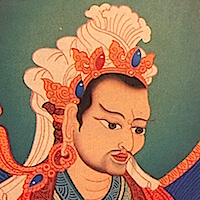
Indrabhūti ཨིནྡྲ་བྷཱུ་ཏི། ("The Enlightened Siddha-King")
892 CE –
Mahasiddha #42
Indrabhuti ཨིནྡྲ་བྷཱུ་ཏི། The Enlightened Siddha-King (late 9th century)
“The first tantrika,” archetypal tantric king, and inspiration for several tantric lineages; Indrabhuti for political reasons pledged his Buddhist sister Laksminkara in marriage to the prince of a neighboring Hindu kingdom. She went to live with the neighboring prince but soon became disillusioned with the materialism, superstition, and decadence of her new country. Late one night she fled the palace and found a cave in the mountains where she lived and practiced meditation, attained enlightenment and scandalously started teaching untouchables. This greatly upset the Hindu king but inspired Indrabhuti to do the same and leave the comfort of palace life to devote himself completely to his spiritual path. He rejected however a path that rejected sensual pleasure and sex and practiced the Guhyasamaja father-tantra in the Anuyoga Dzogchen lineage. Mahasiddha #42
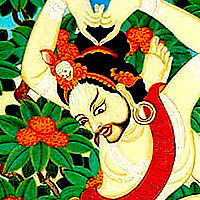
Jālandhara ཛཱ་ལནྡྷ་ར་པ། ("The Ḍākinī's Chosen One")
888 CE –
Mahasiddha #46
Jalandhara ཛཱ་ལནྡྷ་ར་པ། “The Ḍākinī's Chosen One” (late 9th century)
Another wealthy and privileged brahmin who saw through the materialistic values of his culture and renounced it to search for a more meaningful life, Jalandhara left everything to live in a cremation ground meditating. Going on to become an important mother-tantra siddha, one of the nine naths, and guru to 10 of the 84 Mahasiddhas; he founded one of the two main nath lineages (A Hindu tradition favored by Kabir that blended Shaivism, Buddhism and Yoga traditions using Hatha Yoga to transform the physical into awakened perception of “absolute reality”), taught practices that unify the male and female forces, dissolve the subject/object dichotomy, and open the non-dual doors of perception. Mahasiddha #46
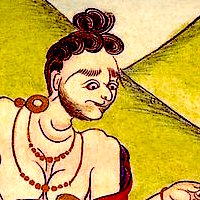
Jayānanda ཛ་ཡཱ་ནནྡ།། ("Crow Master")
11th - 12th century
Mahasiddha #58
A Tantric Buddhist master practicing in Bengal during a time when Buddhism was illegal, Jayananda was exposed by a jealous neighbor and imprisoned by the anti-Buddhist king. Before being captured though, he had befriended and fed a big flock of crows. In Tibetan culture crows are considered bad omens, capable of bringing great harm, and feared. But in a symbol of tantric transformation, Jayananda had made the crows allies. Then—metaphorically as crows or symbolically as an inclusion of the negative—the king was upended, reduced to hiding under his thrown, and as a consequence became a great and influential siddha himself. Mahasiddha #58
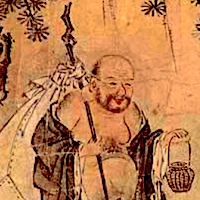
Kakuan Shien 廓庵師遠 (Kuo-an Shih-yuan, Kuòān Shīyuǎn )
1100 – 1200 CE
Most popular Ten Bulls artist/poet
Chan Buddhist monk, artist, and poet; Kakuan expanded on an old Taoist story that used an ox and herding as symbols for the spiritual path. He added two new pictures to a previous version that had 8 and published his new verses and pictures in c, 1178. These new additions emphasized returning to the world and linking closely realization with everyday life. Dramatically symbolizing the path to enlightenment, his rendition became the most popular then and continues to hold that position today in spite of many newer attempts. Exemplifying the close connection between Taoism and Zen, his Ten Bulls became closely identified with Zen in general as well as a continual source of inspiration for students.
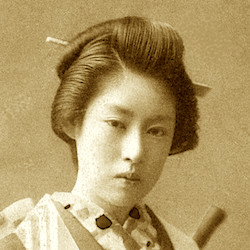
Kakusan Shido
1252 – 1305 CE
Kakusan Shido, Horiuchi (1252 - 1305)
During a time when men could easily divorce their wives but it was almost impossible for women and knowing personally how often women were used as pawns in male wars and revenge killings, Shido established Tokeiji 松岡山東慶寺 - a Rinzai Zen convent and the first used to shelter women.
Shido’s husband was the ruler known for repelling Kublai Khan’s Mongol invasion, spreading Zen Buddhism, and establishing the Samurai tradition. When he died, her dealing with the political intrigue led to this inspiration and the refuge called the “Divorce Temple.” It operated for over 600 years, sheltered runaway wives, gave them counseling and legal help. After helping two daughters of emperors, an emperor gave this extraterritorial rights. This empowered it to officially help divorcées and greatly increased its ability to help women in need.
During just the Tokugawa period, 2,000 women were sheltered and Zen luminaries like Reginald Horace Blyth, and D.T. Suzuki are buried there.
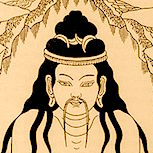
Kālapa ཀཱ་ལ་པ། ("The Handsome Madman")
12th century CE
Mahasiddha #27
So handsome people in the street would stop to stare at him, Kalapa suffered from the paparazzi effect, the stalking and complete loss of privacy. To escape his unwanted fame, he moved into a remote cremation ground where he met an enlightened teacher. This led to his practice of dissolving the delusion of separation between self and other, “uninhibited action,” and communication with people without restraint, political correctness, or concern for praise and blame. Becoming known as a divine madman, he challenged status quo assumptions, prejudice, and belief systems. Last of the traditional 84 Mahasiddhas, Kalapa established the Kalacakra lineage.Mahasiddha #27

Kaṅkaṇa ཀངྐ་ཎ་པ། (“The Siddha-King”)
11th century CE
Mahasiddha #29
A prosperous king addicted to indulging his every whim and desire, Kangkana met a wandering wise man who pointed out how empty his life was - like a mouse on a treadmill chasing imaginary pleasures. Kangkana realized the truth of this but not wanting to abandon his position and kingdom to become an ascetic asked for a practice he could do while remaining a king. This practice taught him the oneness of experience and he transcended the differences between pleasure and pain, loss and gain, stress and strain. Mahasiddha #29
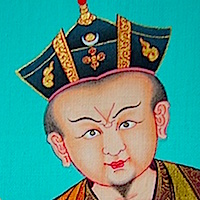
Karma Pakshi ཀརྨ་པཀྴི་
1204 – 1283 CE
Karma Pakshi ཀརྨ་པཀྴི་ (1204 – 1283)
The 2nd Gyalwa Karmapa and descended from a royal bloodline, Karma Pakshi brought the ancient, pre-Buddhist, shamanistic tulku (sprul sku) tradition into Tibetan Buddhism. Traveling widely in Tibet, Mongolia, and China he met Marco Polo but refused Kublai Khan’s request to stay in China. This incurred the emperor’s anger but he transformed it into a respect so deep that he was given the Mongolian name Pakshi (Bagshi) traditionally reserved for the highest Mongol shamans. Famous for his healing powers, sorcery, and ecstasy; he supported religious tolerance, non-Buddhist religions, and created immense balance and harmony. Bringing an ancient pillar of Dharma King Ralpacan (802-836 CE) known as "son of God" into the courtyard of his seat at Tsurphu, he further established his roots in the same ancient tradition that became the Orphic mysteries in pre-Socratic Greece and set up the conditions for the Dalai Lama’s blending of spiritual and secular leadership.
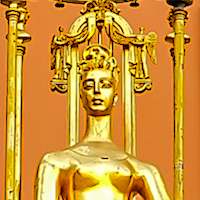
Khutulun (Turandot)
1260 – 1306 CE
Mongolian "Tiger Woman"
Daughter of Genghis Khan's cousin, Kaidu—the most powerful Central Asian ruler of the time—Khutulun became a famous warrior, wrestler, and political influence. Marco Polo described how she could ride into an enemy swarm and snatch a captive like a hawk grabbing a chicken. Beautiful, powerful, and charming; she challenged her many suitors with wrestling competitions and won thousands of horses before finally accepting one. She was chosen by her father to succeed him but the male relatives stopped the succession. She became known in the West as Turandot and memorialized by François Pétis de la Croix, Carlo Gozzi, Friedrich Schiller, Goethe, and—most famously—by Giacomo Puccini. Her renown continues today in many stories and movies, as a popular and extremely successful Australian race horse, and in the Netflix series, Marco Polo.
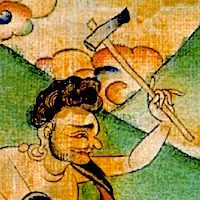
Koṭālipa ཀོ་ཊཱ་ལི་པ། ("The Peasant Guru")
1084 CE –
Mahasiddha #44
Kotalipa ཀོ་ཊཱ་ལི་པ། “The Peasant Guru” (2nd half of eleventh century)
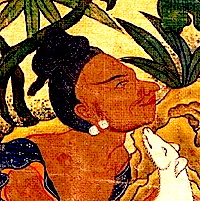
Kukkuripa ཀུ་ཀྐུ་རི་པ། ("The Dog Lover")
915 CE –
Mahasiddha #34
Kukkuripa “The Dog King” ཀུ་ཀྐུ་རི་པ། (10th century CE)
A wandering ascetic, Kukkuripa found and adopted a starving dog brought it back with him to the cave where he lived and meditated. Kukkuripa’s meditation practice took him to pleasurable, psychological god realms but memories of his dog connected him back to the real world where he saw his loyal dog sad, thin, and starving. Spurning the luxury, comfort and extravagance; he returned to the cold, dark, very uncomfortable cave out of compassion for the dog. The dog then became his teacher blending his mind-stream with the deepest insight of all the Buddhas. Naropa sent Marpa to study with him and he became one of Marpa’s most important teachers, famous for his songs of realization, and a “patron saint” for all the downtrodden and oppressed. Mahasiddha #34
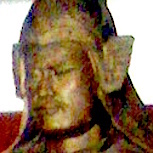
Li Xizhai (Li Hsi-Chai)
12th century CE
I Ching scholar, Taoist yoga master, and author whose commentary on the Tao Te Ching, Tao-te-chen-ching yi-chieh applies Lao Tzu’s teachings to politics, the government, and how to rule with sanity and for the good of everyone. Not well-known in history but another behind-the-scenes, powerful influence for the good, the sense behind the words, and the evolution of consciousness. Tao-te-chen-ching yi-chieh, Red Pine

Lin Mo Niang 林默娘
970 CE –
Lin Mo Niang (silent girl) 林默娘 akaMa Zhou, Mazu, Matsu, Tian Hou (c. 970)
"Empress of Heaven,”patron of seafarers, Confucian, Taoist and Buddhist adept, rainmaker, and Fujianese shamaness from an impoverished and uneducated fishing village where no one could read; Lin Mo Niang lived during a time of mass migrations from China’s north when refugees blended their culture with her local one. Most popular today in Taiwan but banned in Mainland China, her following called Mazuism has over 1500 temples in 26 countries, and statures as high as 139’ (42.3 meters). Equated with Guan
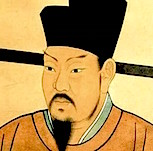
Lu Huiqing
1031 – 1111 CE
Ally to Wang An-shih and aid to his political reform, Lu Huiqing’s commentaries demonstrate his deep Taoist understanding and ability to apply Lao Tzu’s insights and suggestions to his contemporary political and social situation. A seminal resource for Chiao Hung, the Emperor Shenzong of Song requested and received these commentaries in 1078 and used them to strategize and implement radical new policies to improve the situation for peasants and the unemployed. These reforms foreshadowed and helped inspire the modern welfare state.
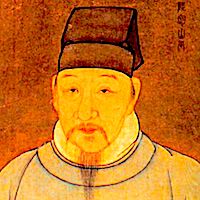
Lù Jiǔyuān 陸九淵 (Lu Xiangshan)
1139 – 1192 CE
Professor, magistrate, and half of the most famous debate in Chinese history during a time when the influence between Taoism, Buddhism and Confucianism was being re-balanced; Lu Hsiang Shan led a simple but profound life. His philosophy of Universal Mind was forgotten for almost 300 years but then—revived by Wang Yangming—became the second most influential school and a major influence on neo-Confucianism. He developed Mencius' concept of the basic goodness of original mind and brought the simplicity and spontaneity of Daoism and the problems with desire from Buddhism into the blend with Confucianism that became neo-Confucianism.
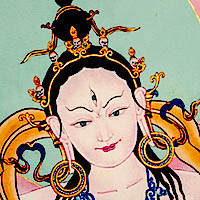
Machig Labdrön མ་གཅིག་ལབ་སྒྲོན།
1055 – 1149 CE
Nun, mother, wandering yogini, mind Stream emanation (tulku) of Yeshe Tsogyal that later became Jetsun Rinpoche; Machig Labdrön came from a Bön family and blended these shamanistic teachings with Buddhist Dzongchen to develop several Tibetan Vajrayana lineages as well as Mahamudra Chöd—a Prajñāpāramitā practice of “Cutting-Through-the-Ego” and experiencing emptiness. A child protege and scholar at a very early age, she left a comfortable and honored place in a monastery to wander and live with beggars and sleep wherever she found herself. Though criticized for having children, her teaching became so popular they spread from Tibet to India. In Tibet, it’s said she overcame the patriarchal bias of her times and gave teachings to as many as 500,000. Her lineage continues the Mahasiddha tradition of India and the Crazy Wisdom teachings of Tibet.
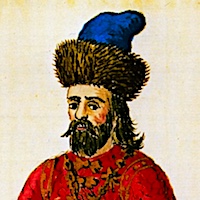
Marco Polo
1254 – 1324 CE
Epitome of adventurous business, political, and geographical exploration
Merchant par excellence, adventurous explorer, successful administrator for Kublai Khan in China, and popular author; Marco Polo became an inspiration for Christopher Columbus, the import-export global economy, and for most of the explorers who came after him. Setting off from Europe when only 17 years old, he spent 24 years in China becoming the governor of Hangzhou, returned to find his city of Venice at war with Genoa, tried to help but only ended up in jail where he described his travels to a cellmate who used them to write the famous book, Travels of Marco Polo. The difficulty and danger of travel in those days in illustrated by survival statistics: on their journey back from China, more than 600 people began with them but only 18 survived the 2-year journey to Hormuz. Later he expanded his business interests to become very wealthy, married and had three children. Frequently accused of exaggeration and fabrication, on his deathbed he responded to this criticism by saying, "I have not told half of what I saw."
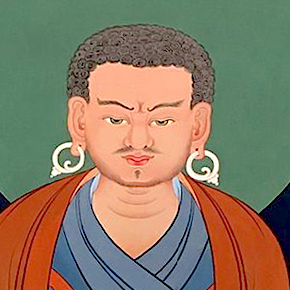
Marpa Lotsawa
1012 – 1097 CE
Founder of the Kagyu lineage of Tibetan Buddhism, teacher to the great Milarepa, businessman, farmer, family man and exemplar of enlightenment in everyday life; Marpa made many, perilous journeys to India and Nepal where he studied Vajrayana teachings, translating and bringing them back to Tibet. Wild, uncompromising, and outrageous; he flourished on physical dangers, psychological and spiritual challenge bringing “tasting the flavor of realization” into his translations that went to the depth of understanding rather than staying on the surface of the words.

Meister Eckhart (Eckhart von Hochheim)
1260 – 1328 CE
Philosopher, theologian, and mystic; Meister Eckhart represents a cultural and philosophical pivot at the end of the Middle Ages. In his own words but like Lao Tzu and the Buddha, he taught that Enlightenment is hidden inside our hearts and through emptiness, compassion and egolessness we become one. Though brought before the Inquisition and tried for heresy, his influence since includes from Schopenhauer (who said, “Buddha, Eckhardt, and I all teach essentially the same.”), to the Theosophical Society, to the politics of the UN’s Dag Hammarskjöld, to the psychology of Erich Fromm, to artists like Van Gough and Dürer, to authors like J. D. Salinger, and in modern times to theologians like Matthew Fox and Eckhart Tolle.
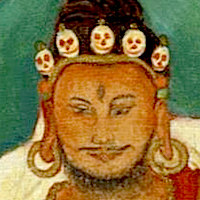
Mekopa མེ་ཀོ་པ། ("Guru Dread-Stare")
1050 CE –
Mahasiddha #43
Mekopa, མེ་ཀོ་པ། Guru Dread-Stare (11th century)
Always cheerful and kind Bengali food merchant taken as a student by a yogin customer, Mekopa saw into the vastness of his own mind, the uselessness of chasing desires, and harmfulness of action based on duality. His realization led him far beyond the limits of status quo, conventional social standards and behavior; into a lifestyle unbound by concern for people’s opinion, wandering about a cremation ground “like a wild animal” and into towns like a mad saint with dreadful, staring eyes. Mahasiddha #43
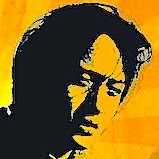
Milarepa རྗེ་བཙུན་མི་ལ་རས་པ།
1052 – 1135 CE
Black magician enemy-killing sorcerer transformed into a great Tibetan folk hero, poet, singer-songwriter and saint; Milarepa always refuted any hero worship or deification stressing his humble background and realization that anyone could achieve. Overcoming powerful, psychological demons, he left far behind fame, fortune, pleasure, power, even companionship and after many years of solitary meditation wandered throughout Tibet teaching and leading students to illuminating, egoless, complete sanity beyond the corruptions of a belief in a separate self. Profound without pretense, ageless because authentic, livable because so simple; Milarepa’s teaching and inspiration continues.
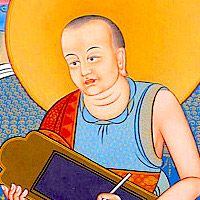
Mondup Sherab
12th century CE
Obscure, Tibetan 12th century monk and translator, student of Abhayadattashri
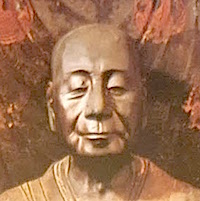
Mujū Dōkyō 無住道曉 (Ichien Dōkyō )
1227 – 1312 CE
”The Non-Dweller”
Champion of diversity and pluralism, Mujū Dōkyō appreciated and practiced many traditions only disapproving of intolerance, secularism, and all kinds of chauvinism. Mainly considered in the Rinzai tradition, he also studied Tendai, Pure Land, Hosso, Shingon, and Ritusu and criticized all forms of fundamentalism and teachers who denounced practices other than the ones they taught themselves. He wrote the Shasekishū (Sand and Pebbles), Zen anecdotes and stories immortalized by Paul Reps in Zen Flesh, Zen Bones.
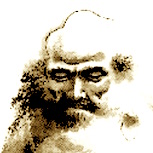
Mumon Ekai 無門慧開 (Wumen Huikai)
1183 – 1260 CE
Pioneering pathfinder to the Gateless Gate
Epitome of the Chan/Zen master, Lay Monk, and famous koan collector/commentator; Mumon wandered homeless with long hair and beard in old and dirty robes for many years working in the temple fields. Emphasizing the importance of "Great Doubt,” he taught that enlightenment is “just a matter of rousing the mass of doubt throughout your body, day and night, and never letting up." His koan compilation, The Gateless Gate has stopped the “word-drunkenness” of countless students through the centuries and still inspires and points out a a true but “gateless” path.
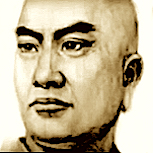
Nichiren Daishonin
1222 – 1282 CE
Born during a time of great internal strife, famines, disease, drought, typhoons, and earthquakes; Nichiren criticized other schools for distorting Buddhist teaching for personal gain, manipulating people for political and religious control, materialism and corruption. Persecuted by Buddhist priests, exiled, ambushed and almost killed, arrested with the intent to behead by soldiers, and later banished to a remote, primitive island; he described chanting as the only personal and social path to salvation and taught that women can attain enlightenment. A strong voice for common people and the down-trodden, he emphasized basic goodness, practices anyone can do, and started a powerful movement still strong today.
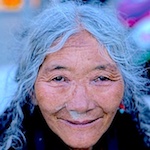
Niguma
11th C. CE
“Dakini of timeless awareness,” co-founder of the “secret lineage,” the Shangpa Kagyu school of Vajrayana Buddhism, wife and later disciple of mahasiddha Naropa, teacher to Marpa the translator; Niguma wrote 13 books basic to the Tibetan Buddhist tradition and had a deep and continuing influence on the foundations and practices of Buddhism in Tibet and other countries. One of the most important and influential teachers of her time, she established a complete set of spiritual practices called the Six Yogas of Niguma that is still practiced, studied and greatly appreciated today.
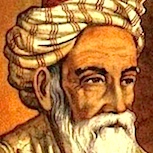
Omar Khayyám
1048 – 1131 CE
Persian Astronomer-Poet, prophet of the here and now
In the west most famous for his poems but Omar Khayyam was also a political advisor, “philosopher of the world,” one of the most influential scientists of his era, “one of the greatest mathematicians of medieval times,” and “without equal in astronomy and philosophy.” A prophet of the here and now, mystical Sufi teacher and free-thinker who rejected theology; he reformed the Persian calendar to a form more accurate than our own today, wrote the most important until modern times book on algebra as well as many others on astronomy, geography, and mechanics. His poems—known as the Rubáiyát—not only rejected Islamic belief and Christian morality, but the nature of religion itself.
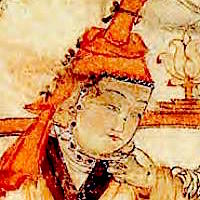
Orghina Khatun
1208 – 1261 CE
Orghina Khatun ( - 1261)
Daughter of the Oirat ruler, niece of Mongke Khan, and incorporated into Genghis Khan’s family lineage by marriage; Orghina Khatun became the first and only woman that ruled over the Chaghataid Khanate. Beautiful, wise, and pragmatic; her fortunes frequently rose and fell as she maintained her influence and power base by frequently switching sides, changing allegiances and religions as needed. She maintained supreme authority for over 15 years during a time when intense and violent struggles between leaders trying to take Genghis Khan’s place as Great Khan created one of history’s most chaotic political periods.
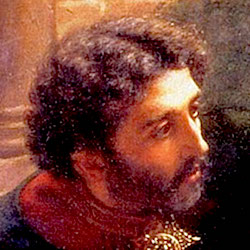
Peter Abelard Pierre Abélard
1079 – 1142 CE
Peter Abelard, Pierre Abélard (1079 – 1142)
Described as "the keenest thinker and boldest theologian of the 12th Century,” Abelard was on a strong path to becoming a pope when he fell in love with Héloïse and instead wrote some of the most important books of his era while becoming a legend in the history of romantic love, of inner certainty over external, status quo coersion. In his early life, thousands of students coming from many countries came to hear him teach. His fame and admiration immense, but his love of Héloïse led to his castration by her uncle, his becoming a monk, and her becoming a nun. This challenged the physical side of their relationship but their deep emotional bond continued through letters written the rest of their lives.
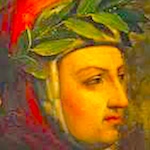
Petrarch
1304 – 1374 CE
The “Father of Humanism,” troubadour of romantic love, lover of nature, “Virgil born again,” the most famous unrequited lover, and most important poet of his age; Petrarch inspired an interest in ancient history and as “the first tourist” discovered and translated many old manuscripts including Cicero’s letters that sparked the 14th-century Renaissance. Holding the sense over the words, he challenged orthodoxy and invented new Latin terms to describe Greek philosophy, developed the concept of an historical “Dark Age” after the fall of Rome, a need for a cultural revival, inspired the political, military, and religious leaders of his time to ground their lives in classical values and contemplation. and his sonnets became a model for lyrical poetry through modern times.
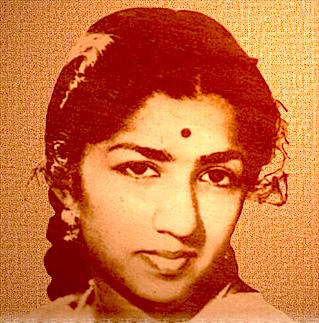
Razia Sultan Jalâlat-ud-Dîn Raziyâ (Raziya al-Din)
1205 – 1240 CE
Daughter of a Turkish slave who rose to become a sultan and the only woman to rule the Delhi Sultanate before or since; Razia devoted her rule to helping her people and established many libraries, research centers, and schools that went far beyond purely Islamic studies and included ancient philosophies, science, astronomy, and literature. Abandoning the veil, she was just, tolerant, and on religious matters emphasized the sense over the words, the spirit as more important than dogmatic belief. Her romantic love affair with Altunia is still famous and her inspiration continues in modern movies and TV shows.
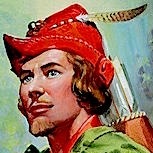
Robin Hood
1160 – 1247 CE
The historicity debate about Robin Hood may not be as much about if there really was one as about how many different ones there were. A symbol for history’s recurring story of class warfare, the rich against the poor, the economics and politics of keeping the highborn high and the lowborn low is as relevant today as it was in medieval England and the dawn of civilization. While in Chinese political philosophy, rulers were taught that if the poor were too poor it’s the government’s fault and the they have every right to steal, in European and American history the Robin Hoods were vilified. In Atlas Shrugged, Ayn Rand wrote, “until the last trace of Robin Hood is wiped out of men’s minds, we will not have a decent world to live in.”

Rumi مولانا جلالالدین محمد بلخی (Rumi Mawlānā Jalāl ad-Dīn Muḥammad Balkhī)
1207 – 1283 CE
Sufi mystic, Afghan hero, Sunni scholar-theologian, and one of the most widely read poets in the United States; Rumi went beyond religious, cultural, and ethnic borders to become a bridge between Shia and Sunni Muslims, East and West, between many of the world’s religions and cultures. Always a strong voice for peace, harmony, and understanding; he composed what’s considered the greatest poem written in the Persian language. While fleeing from a Mongol invasion with his family and during later journeys, he encountered many poetic and spiritual influences that transformed his conventional life of a scholar and jurist into an ascetic teacher who used music, poetry and dance to communicate the highest wisdom.
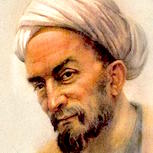
Saadi Shiraz سعدی شیرازی
1210 – 1292 CE
One of the greatest Persian poets and literary influences in medieval times and an influence on the West through people like Goethe, Hegel, Pushkin, and Barack Obama; Saadi - with a Zen-like approach similar to the great Tibetan teacher, Marpa - blended a mystical Sufi realization with a practical traveling merchant lifestyle. Escaping the hardship and poverty of his Baghdad youth, he traveled widely for 30 years including 7 years of imprisonment enslaved to hard labor. He then wandered 20 more years during the Mongol invasions mingling with ordinary people, bandits, refugees, spiritual teachers and farmers translating their experiences into poetry and wisdom teachings.
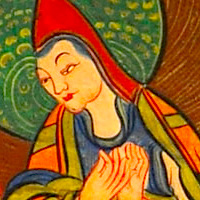
Sakya Pandita ས་སྐྱ་པཎྜ་ཏ་ཀུན་དགའ་རྒྱལ་མཚན། (Kunga Gyeltsen)
1182 – 1251 CE
Tibetan spiritual leader, scholar, doctor, scientist, poet, and politician; Sakya Pandita spent his early life as a monastic scholar and his late life applying his experience and understanding to the secular world as an advisor to the Mongol court. Born into a noble family; he began his religious studies at only 5 years old, became a monk at a very early age, and studied in Kashmir, India, and Nepal bringing an international view to his teachings. After Genghis Khan conquered Tibet in 1206, his descendants – drawn by the shamanistic similarities between the Sakya and Mongol traditions – brought Sakya Pandita into the government in an attempt to legitimize Mongol rule. At court he cured the Prince of a serious illness, was given authority over much of Tibet, and became the main agent of the Mongols in Tibetan affairs. He prevented more devastating invasions of Tibet, established an almost 100-year secular Sakya rule, and wrote some of the most influential Tibetan works of literature, many that are still part of the educational curricula today in Tibet, India, and Bhutan.
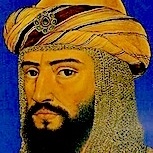
Saladin صلاح الدين يوسف بن أيوب (An-Nasir Salah ad-Din Yusuf ibn Ayyub)
1137 – 1193 CE
The most famous Kurd in history, Saladin’s Sun-Tzu-like strategy, success during the Crusades, and his conquering of Jerusalem have become a symbol for the Arabian struggle against the West. His eagle symbol was adopted by Egypt, the UAR, Iraq, Libya, Palestine, and Yemen. During times of deep European corruption and savagery, his tolerance, generosity, and justice - although not often emulated - have also become an important example for modern times. Respected as a chivalrous knight by Christian lords and European culture for hundreds of years, he dedicated himself to the happiness of people, gave away much of his personal wealth, and faithfully honored his agreements.

Shen Kuo 沈括 (Mengxi)
1031 – 1095 CE
Greatest scientist of his age, statesman, inventor, poet, finance minister, horticulturalist, engineer, art critic, diplomat, military general, musician, and commentator on ancient Daoist texts; Shen Kuo discovered the magnetic compass needle and the concept of true north which revolutionized navigation 400 years before known in Europe, popularized Bi Sheng’s invention of moveable type 400 years before Gutenberg, researched and described climate change, made the first raised-relief map, described UFOs and beneficial insects, re-discovered an ancient Chinese surveying tool unknown in Europe until 1321. Politically aligned to Wang Anshi, he was impeached, exiled and spent his older years with the "nine guests" — playing music, weiqi (Go), Chan meditation, painting, tea, alchemy, poetry, conversation and wine.
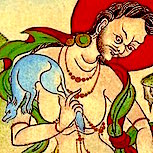
Shyalipa ཥྱ་ལི་པ། (Śyalipa, "The Jackal-Yogin")
1000 – 1100 CE
Mahasiddha #21
A poor laborer terrified of jackals but living on the edge of a cremation ground full of jackals, Shyalipa became so terrified he couldn’t sleep at night and only a little during the day when he dreamed about jackals. Kind to a wondering teacher who gave him a practice called “the fear that destroys fear,” he learned to meditate on the jackal howls until he could recognize the indivisibility of emptiness and sound, the complete appreciation of his self-liberated fear. Rather than running away from his terror or trying to get rid of it, he leveraged overcoming his fear of jackals to overcoming his fear of death and the suffering of life, he “destroyed his fear with fear,” and wearing a jackal skin became an important teacher himself. Mahasiddha #21

Su Che 呂洞 (Su Zhe)
1039 – 1112 CE
Great writer of the Tang and Sung dynasties
Famous politician and essayist, one of "The Eight Great Men of Letters of the Tang and Song Dynasties,” exiled for his political criticisms; Su Zhe skillfully criticized social conditions in an effort to influence the emperor into creating better living situations for the common person. Champion of reforms to help the poor and protect them from the rich and powerful and also to help the rich realize that their hoarding and selfishness only made them more vulnerable to revolt, robbery, and revolution. The temple where he lived and taught is now a museum and one of China’s more famous cultural attractions.
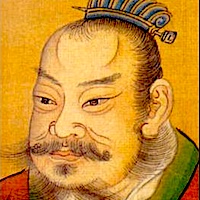
Su Shi 苏轼 (Dongpo, Su Tungpo)
1037 – 1101 CE
"pre-eminent personality of 11th century China"
Writer, statesman, poet, painter, calligrapher, pharmacologist, and important political figure; Su Shi wrote some of his time's most well-known poems and prose as well as essays on topics from travel to the iron industry. An exceptional and highly honored scholar, while serving in the Hangzhou government, he constructed the famous pedestrian causeway across West Lake. His poems got him into political trouble leading to two long exiles and imprisonment; but also, they brought him a fame that spread to many other countries and continues today. His poems on Buddhist topics became an important influence on Dōgen, founder of the Zen Sōtō school.
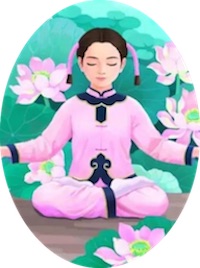
Sun Bu'er
1119 – 1182 CE
Sun Bu'er 孫不二 (1119 – 1182)
Taoist priestess, one of the Seven Masters of Quanzhen, mother of 3, beautiful, intelligent, wealthy, and known as “Clear and Calm Free Human;” Sun Bu'er founded the Purity and Tranquility School and wrote many famous poems and secret Taoist texts. She developed a “science of essence” concerned with psychologically going beyond the influence of both inherited personality and learned conditioning as well as a “science of life” developing ways to increase health and energy. Destroying her beauty to prevent male attack, she became the only woman included in the famous Taoist “Seven Perfected,” and through the ages a role model and inspiration for women following a spiritual path.
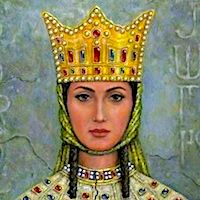
Tamar თამარ მეფე
1160 – 1213 CE
Tamar the Great
The first woman to rule Georgia and canonized by the Georgian Church; Tamar developed a powerful military, consolidated an empire, and supported the arts and many cultural advancements. Georgian history considers the time of her rule as the highest point of their Golden Age. She overcame intense resistance to a woman's rule that included exiling her first husband and defeating his coup attempts. Her dynastic heritage claimed descent from King David and her name has a Hebrew origin. Her two sons became the next two kings and she remains romanticized in legends still popular in contemporary Georgian culture.
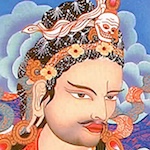
Thaganapa
11th C. CE
A low-caste, compulsive liar, Thaganapa’s entire life depended on his lies, deception, and scams. One day he met a monk who saw through, confronted, and challenged him to lead a better life. Thaganapa asked for teachings and the monk gave him a practice of using deception as an antidote to deception teaching him that everyone’s experience is deceiving from the beginning, that everything is a lie. He meditated on this for 7 years and then on all as emptiness until he became enlightened himself and taught a path of resolving paradox and unifying conflict.
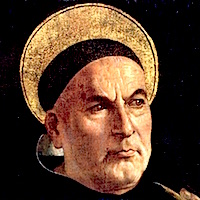
Thomas Aquinas
1225 – 1274 CE
Greatest Catholic theologian/philosopher, considered one of the top 12 western philosophers of all time, jurist, and Dominican friar; Aquinas had a dominant influence on Western culture, ethics, law, and political theory. Breaking from the theology of his time, he attempted reconciling ancient Greek philosophy (mainly Aristotle) with Christianity, extolled reason over blind faith, and created an intellectual platform for science that is still being used today by cognitive neuroscientists researching brain dynamics. Undermining dogmatic, rigid approaches to morality, his “Principle of double effect” emphasizes intention over consequences and is still debated in places like the U.S. Supreme Court. John Stuart Mill criticized this attitude stating that while intention may help judge character, it doesn’t effect the rightness/wrongness of an action.

William of Ockham
1287 – 1347 CE
Major intellectual figure during medieval times, Franciscan friar at the center of the biggest political controversies of his era, and famous for his principle now called Occam’s razor; William of Ockham’s commentaries were condemned by a council of bishops and he was commanded to defend himself at a papal court. Instead, he fled the country, took refuge with the Holy Roman Emperor, and was excommunicated. One of the first to encourage a strong separation between church and state, a liberal democratic ideology, and social contract theory; his Occam's Razor theory became a small-is-beautiful, less-is-more foundation for modern science and natural philosophy.
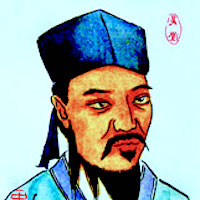
Wu Cheng 吴澄
1249 – 1333 CE
"Mr. Grass Hut"
Important scholar, poet, and professor; Wu Cheng supported and continued the Neo-Confucian movement begun by Zhu Xi. He went further than Zhu Xi’s emphasis on synthesizing the different traditions, included more Taoism, and worked to extend the standard curriculum beyond just the Four Books. He opposed superstitious beliefs and criticized the way scholars understood and practiced divination techniques. He wrote popular commentaries on the Tao Te Ching and most of the classic Chinese texts but his biggest influence was as a teacher and through his students who developed the School of the Mind and Heart during the Ming (1368-1644) and Qing (1644-1912) dynasties.
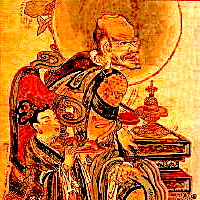
Yoshida Kenkō 兼好
1284 – 1350 CE
Inspiration of self-reinvention
After a life working as an officer of the guards in the Imperial palace, Kenko became a monk and one of the most famous authors of his era. His speculations on universal themes like beauty, nature, impermanence, and friendship found a deep resonance of feeling during his own time, one that continued fresh through the time since, and one remains part of Japanese school curriculum today. A paragon demonstrating the ever-present possibilities of re-inventing ourselves, Kenko’s transformation from a menial worker into an insightful sage became an inspiration in itself, beyond the wisdom in his essays and poems themselves.
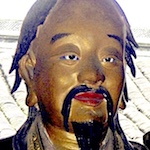
Yuanwu Keqin 圜悟克勤 (Yuánwù Kèqín)
1063 – 1135 CE
Author of the most famous Zen book, The Blue Cliff Record, Yuanwu became a renowned spokesperson for the non-thought lineages teaching a broad, open approach to religion beyond sectarianism, dogma, emotion and ritual that he saw as enemies to true understanding and realization. He left his Confucian family for a Buddhist monastery at a time when Confucianism, Buddhism, and Taoism were mingling and rejuvenating each other. His influence helped the spreading of this powerful force throughout the country and culture.
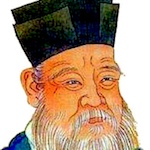
Zhu Xi 朱熹 (Zhū Xī)
1130 – 1200 CE
Called by historians the “second most influential thinker in Chinese history” and “one of the most influential people” in the last millennium, Zhu Xi blended Confucianism, Taoism, and Buddhism into a tradition called Neo-Confucianism. He synthesized ancient teachings into The Four Books which became the heart of the educational, bureaucratic, and governmental system for over 700 years in China as well as Japan, Korea and other countries. More Confucian than Buddhist or Taoist, the emphasis is on practical wisdom rather than the wisdom beyond words but still set a foundation for wise and compassionate government leading to peace and prosperity.
Quotes (1 Quotes)
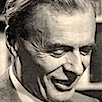
“This history of Europe during the later Middle Ages and the Renaissance is largely a history of the social confusions that arise when large numbers of those who should be seers abandon spiritual authority in favor of money and political power.”
Comments: Click to comment
Western Eras
Agricultural Revolution (10500 – 4000 BCE)
Sumerian (Mesopotamia) Civilization (4400 – 3100 BCE)
Egyptian Civilization (3150 – 305 BCE)
Babylonian Civilization (1895 – 619 BCE)
The Axial Age, “The Great Leap of Being” (800 – 200 BCE)
Greek Civilization (480 – 146 BCE)
Roman Civilization (100 BCE – 395 CE)
Early Middle Ages (566 – 1095 CE)
High Middle Ages (1095 – 1304 CE)
The Age of Reason: The Enlightenment (1620 – 1800 CE)
Post-Romantic Age (1850 – 2018 CE)
American Civil War (1861 – 1865 CE)
Comments (0)